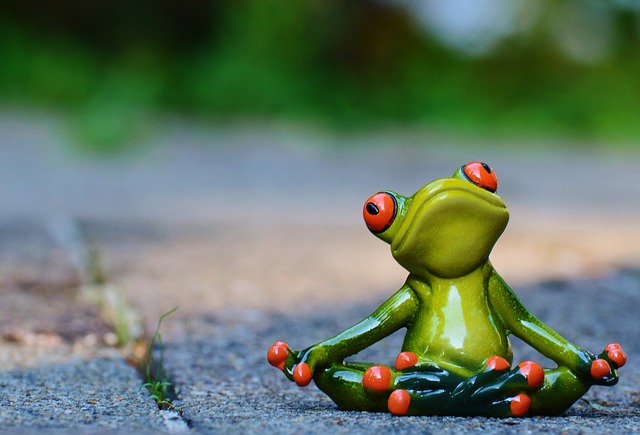# Unlock Inner Peace: Embrace Yoga as Your Ally Against Stress
In today’s fast-paced world, stress has become an unwelcome companion for many. The constant demands of work, family, and social obligations can lead to feelings of overwhelm and anxiety. Fortunately, there is a powerful tool that can help you combat stress and cultivate a sense of inner peace: yoga. This ancient practice not only enhances physical well-being but also promotes mental clarity and emotional stability. In this article, we will explore how yoga can be your ally against stress and provide practical tips for incorporating it into your daily routine.
## The Connection Between Stress and the Mind-Body Relationship
Stress is often a product of how we perceive and respond to our environment. When faced with challenges, our bodies react by releasing stress hormones like cortisol and adrenaline, which prepare us for a ‘fight or flight’ response. While this reaction is useful in short bursts, chronic stress can lead to a myriad of health issues, including anxiety, depression, and cardiovascular problems.
Yoga, with its roots in ancient philosophy, emphasizes the connection between the mind and body. Through a combination of physical postures (asanas), breath control (pranayama), and meditation, yoga encourages practitioners to become more aware of their thoughts and feelings. This heightened awareness allows individuals to recognize stress triggers and develop healthier coping mechanisms.
## The Benefits of Yoga for Stress Relief
### 1. Physical Release
One of the most immediate benefits of yoga is its ability to release physical tension. Many of us carry stress in our bodies, resulting in tight muscles and discomfort. Yoga postures help to stretch and strengthen the body, promoting relaxation and reducing muscle tension. Poses such as Child’s Pose, Downward Dog, and Forward Bend are particularly effective for alleviating stress and promoting a sense of calm.
### 2. Breath Control
Breathing is a fundamental aspect of yoga that plays a crucial role in stress management. During yoga practice, practitioners learn to control their breath, which can have a profound impact on the nervous system. Deep, mindful breathing activates the parasympathetic nervous system, promoting relaxation and reducing feelings of anxiety. Techniques like Ujjayi breath (Victorious Breath) and Nadi Shodhana (Alternate Nostril Breathing) can be especially helpful in calming the mind and body.
### 3. Mindfulness and Meditation
Yoga encourages mindfulness, the practice of staying present in the moment without judgment. By focusing on the breath and the sensations in the body, practitioners can cultivate a greater sense of awareness and clarity. This mindfulness extends beyond the yoga mat, allowing individuals to approach stressful situations with a calmer, more centered mindset.
Meditation, often integrated into yoga practice, offers additional benefits for stress relief. Regular meditation has been shown to reduce anxiety, improve emotional regulation, and enhance overall well-being. Even a few minutes of meditation each day can create a significant shift in how we respond to stress.
## How to Incorporate Yoga into Your Daily Life
### 1. Start Small
If you’re new to yoga, it’s important to start small. You don’t need to commit to an hour-long class every day. Begin with just 10-15 minutes of yoga each day. You can find countless online resources, including videos and apps, that offer short sessions tailored for beginners.
### 2. Create a Dedicated Space
Designate a quiet, comfortable space in your home for your yoga practice. This could be a corner of your living room or a spot in your garden. Having a dedicated space helps to create a calming environment that encourages relaxation and focus.
### 3. Explore Different Styles
Yoga comes in many different styles, each with its own focus and benefits. Hatha yoga is great for beginners, while Vinyasa offers a more dynamic flow. Restorative yoga is perfect for relaxation and stress relief. Experiment with different styles to find what resonates with you.
### 4. Join a Class or Online Community
Consider joining a local yoga class or an online community. Practicing with others can provide motivation and support, making it easier to stay committed to your practice. Many studios offer beginner classes, and online platforms often have live sessions and recorded classes that fit your schedule.
### 5. Listen to Your Body
Yoga is about tuning in to your body and honoring its needs. If a pose doesn’t feel right, don’t push yourself. Modify poses or take breaks as needed. The goal is to create a practice that feels good and supports your well-being.
## Conclusion
Incorporating yoga into your life can be a transformative journey towards stress relief and inner peace. By embracing the mind-body connection, you can cultivate resilience against the challenges of daily life. Whether you practice for a few minutes each day or attend regular classes, the benefits of yoga are profound and far-reaching. Unlock your inner peace and let yoga be your ally against stress – your mind and body will thank you.

